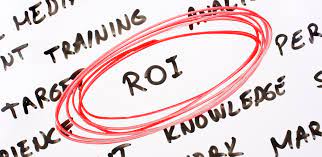In times of economic uncertainty, sales teams often face the daunting challenge of keeping their businesses afloat. The sad reality is less than 50% of salespeople have received sales skills training. When markets tighten and the tide of business goes out, many salespeople find themselves selling naked. The unpredictability of the market and a sluggish economy can significantly impact sales figures, making it more critical than ever to have a well-honed sales skill set. When we engage with a team wanting to improve their sales skills the first step is to assess the current state of sales skills for the team and each person on the team. We review 21 skills competencies and beliefs, identify skills gaps then prescribe training and coaching to close the gaps we discovered. In this article, we’ll discuss twelve essential sales skills we have found to help your sales team navigate slow economic times and emerge stronger than ever. We will discuss skills to make your team recession-proof.
Sales Skill #1: Active Listening
Active listening is the process of fully focusing on the speaker, understanding their message, and providing appropriate feedback. This skill is essential in sales because it allows you to better understand your clients’ needs, address their concerns, and foster trust. Sadly however, many salespeople listen to reply and not learn. They must develop active listening skills.
For example, when a client is discussing their pain points or requirements, an active listener would pay attention to both verbal and non-verbal cues, ask clarifying questions, and paraphrase the client’s statements to ensure accurate understanding.
Tips for improving active listening skills.
- Practice being present and attentive during conversations.
- Avoid interrupting the speaker and let them finish their thoughts.
- Use open-ended questions to encourage elaboration.
- Provide verbal and non-verbal feedback to show you’re engaged.
- Take notes.
- Share key insights your learned in each follow up.
Sales Skill #2: Relationship Building
Relationship building is the process of establishing trust and rapport with clients, which is crucial for fostering long-term business partnerships. Relationships in business are built when competence, authenticity and integrity come together. Strong relationships lead to increased client retention, higher referrals, and improved sales performance and higher profit margin per sale. When we engage with sales teams, we assess their relationship building skills. Many salespeople have a need to be liked that is greater than their need to be respected. In these cases, salespeople confuse a friendship with a business relationship. A recent study found business relationships are only used 45% of their true potential. We train salespeople on how to systematically build business relationships that lead to revenue and improved customer satisfaction.
For instance, a salesperson could take the time to learn about their clients’ businesses and anticipate their needs, provide valuable information and resources, or attend industry events to network and maintain connections. In training we help salespeople build the questions and skills to uncover the customers goals, passions, and challenges.
Tips for improving relationship building skills.
- Show genuine interest in your clients and their goals.
- Be responsive and timely in your communications.
- Provide consistent, high-quality service.
- Follow up with clients regularly to maintain engagement.
- Uncover your customers goals (personal and professional)
- Find your customers passions.
- Help uncover challenges the customer is facing.
- Be a business consultant masquerading as a salesperson.
- Evolve your relationship from sales rep to Trusted Advisor
- Build a relationship matrix at your customers with all key decisionmakers and influencers.
- Find and feed seagulls early
Sales Skill #3: Adaptability
Adaptability is the ability to adjust to new situations and challenges with ease. In sales, this skill is crucial as it enables you to respond effectively to changing client needs, market conditions, and industry trends. When we assess sales teams, we look at what we refer to as the figure-it-out factor. Will your salespeople be able to identify shifts and apply the training to those new situations? Here we need to build EQ and situational awareness skills.
For example, a salesperson who can quickly pivot their sales approach to cater to a client’s evolving preferences or develop new strategies when faced with emerging competitors will be more successful in the long run. One of my clients in the automotive market typically quoted products in truckload quantities. However, when their accounts started focusing more on cash flow and reducing inventory, they adjusted their conversations to provide just in time orders.
Tips for improving adaptability skills.
- Be open to change and embrace uncertainty.
- Stay informed about industry trends and developments.
- Develop contingency plans for various scenarios.
- Cultivate a growth mindset and view challenges as opportunities.
- Challenges often become new product and new service opportunities and we must identify them quickly.
- Teach skills not scripts, so your sales team is prepared for any scenario.
Sales Skill #4: Problem Solving
Problem solving is the ability to identify issues and develop effective solutions. In sales, this skill is essential for addressing client concerns, handling objections, and generating value for your customers. Buyers have spoken and 85% of buyers expect a salesperson to be able to connect the dots between what they are selling and how it impacts the customers’ bottom-line. Customer decision makers are hungry for problem solving skills, best practices, and application insights. (The things not typically found on your website)
For instance, a salesperson who can troubleshoot a client’s issue with a product or service and suggest practical remedies will not only resolve the problem but also demonstrate their commitment to customer satisfaction.
Tips for improving problem solving skills.
- Analyze situations from multiple perspectives.
- Break complex problems into smaller, manageable components.
- Employ creative thinking techniques to generate unique solutions.
- Continuously evaluate the effectiveness of your solutions and refine them as needed.
- Use data.
- Look for patterns and trends.
- Seek how others have solved similar problems.
- Train your sales managers to coach salespeople.
Sales Skill #5: Communication
Communication is the process of conveying information effectively, clearly, and timely. Strong communication skills are critical in sales, as they enable you to articulate the value of your products or services, address client concerns, and negotiate deals successfully. Can your salespeople initiate conversations that lead to revenue? Or do they wait for customers to share problems and challenges? Can your salespeople share your value proposition in such a way that touches on your customers key value drivers?
A salesperson who can effectively present their offerings in a compelling manner, adapt their communication style to suit the audience, and actively engage in conversations with clients will likely close more deals and build lasting relationships.
Tips for improving communication skills.
- Practice public speaking and presentation techniques.
- Tailor your message to the audience’s needs and preferences.
- Use clear, concise language and avoid jargon.
- Employ storytelling to make your message more engaging.
- Build buyer personas for the top 5 decision making personas your team engages with.
- Understand your companies’ value drivers.
- Understand your customer’s value drivers.
- Understand the DISC personality style of the person you are speaking with and adapt your style to what their personality style needs.
- Train your salespeople in conversation skills like: Rapport, Discovery, and Qualifying
Sales Skill #6: Time Management
Time management involves organizing and prioritizing tasks to maximize productivity. Effective time management is essential in sales, as it allows you to focus on high-priority activities, meet deadlines, and achieve your goals. Just last week I spoke at a client’s national sales meeting and delivered two days of training. I shared there are three big challenges salespeople face: Focus, Skills, and Time. The data is in, and most salespeople spend less that 20% of their sellable time selling. We must train our salespeople in time management skills.
For example, a salesperson who diligently schedules their day to accommodate prospecting,
client meetings, and administrative tasks will be more efficient and successful in their role. Top preforming salespeople act as the CEO of their business and spend time based on where they receive the greatest returns.
Tips for improving time management skills.
- Set clear goals and prioritize tasks based on importance and urgency.
- Break down large tasks into smaller, achievable steps.
- Use time management tools, such as calendars and to-do lists, to stay organized.
- Avoid multitasking and focus on one task at a time.
- Trust, build trust in other departments to do what they say they will do.
- Create an activity log for 2 weeks and help salespeople see where they spend time today.
- Only use social media for social selling activities that align with current and new account growth.
Sales Skill #7: Negotiation
Negotiation is the process of reaching agreements through discussion and compromise. We need to understand our BATNA. Effective negotiation skills are essential in sales, as they enable you to secure favorable deals, maintain profitable margins, and ensure client satisfaction. Over 75% of professional buyers have received some form of negotiations training and less that 15% of salespeople have received negotiations skills training. We have a skills miss match between buyers and salespeople in most cases. As a result, salespeople often leave money on the table or lose orders you could have won if they were trained.
A successful salesperson may negotiate pricing, contract terms, or delivery schedules to accommodate client needs while still maintaining their company’s interests. They understand the concept of give and get and how every part of a transaction is negotiable.
Tips for improving negotiation skills.
- Prepare thoroughly by understanding your and the client’s needs and limitations.
- Establish rapport and trust with the client.
- Utilize effective communication and active listening.
- Be willing to compromise (give and get) and find mutually beneficial solutions.
- Have a win-win mindset.
- Leave your ego at the door.
- Have a negotiation plan.
- Plan for how the buyer will win and explain the negotiation to their team.
- Teach the 12 hard bargaining tactics to your salespeople and how to handle them.
- Know your walk-a- way point.
- Know the cost of doing nothing.
- Practice with coworkers not customers.
Sales Skill #8: Closing
Closing is the process of asking for the order. Unfortunately, 67% of salespeople never ask for the order. They present the solution, they used a solution-based sales approach and demonstrated the economic value to the customer if they commit, …but they never ask for the order. As we assess sales teams closing skills is consistently a sales kills gap that can be quickly filled with training and coaching.
For example, one of my favorite sales closing techniques is the calendar close. We have done discovery, we qualified the opportunity and confirmed we are dealing with a decisionmaker, they have budget, need, and we know their timeline. A calendar close might sound like this. Based on your need to have this product by June 1st to meet your product launch, and our current turnaround time of 14 weeks, can you have the order sent to me by this Friday, so we meet your delivery needs?
Tips for improving closing skills.
- Train your sales team on the top closing skills
- Follow a formal sales process and closing will be a natural next step.
- Train your salespeople how to identify and handle objections long before attempting to close.
- Train your salespeople in negotiation skills.
- Understand and communicate the cost of doing nothing.
Sales Skill #9: Value-Based Solution Selling Skills
Value-based solution selling is about clearly understanding the customers challenges and the impact those challenges are having on their bottom-line. Here we propose solutions and collaborate with our clients to solve their urgent problems. We quote our solutions based on the value they deliver to our client’s business and not our cost to deliver them.
For example, a salesperson trained in value -based solution selling will spend a much greater amount of time in the discovery and qualifying phases of the sales process. They will ask great questions that demonstrate their competence and build trust. Their questions will start with what and how and not why. They will understand the economic value to the customer of solving this problem and the cost to the customer of doing nothing.
Tips for improving Value-based Solution Selling Skills.
- Train salespeople to understand how your customers make money.
- Build your sales team’s business acumen skills.
- Develop your sales team’s discovery and qualifying skills.
- Train sales team in solution based selling skills.
- Improve negotiation and closing skills
Sales Skill #10: Resilience
Resilience is the ability to bounce back from setbacks and persevere through challenges. In sales, resilience is crucial for maintaining motivation, overcoming obstacles, and achieving long-term success.
For instance, a salesperson who faces a series of rejections but remains determined and focused on their goals demonstrates resilience and becomes rejection-proof.
Tips for improving resilience skills.
- Develop a positive mindset and focus on growth opportunities.
- Set realistic expectations and accept that setbacks are part of the process.
- Surround yourself with supportive colleagues and mentors.
- Regularly practice stress management and self-care techniques.
- Take rejection-proof training.
- Do mindset work on what a rejection really is.
Sales Skill #11: Strategic Thinking
Strategic thinking involves analyzing situations, identifying opportunities, and developing plans to achieve long-term objectives. This skill is vital in sales because it enables you to align your efforts with business goals and stay ahead of the competition. Salespeople who know how to build and deliver a business case achieve significantly higher sales and profits than those that do not.
A salesperson who identifies emerging market trends and adjusts their sales approach accordingly or who develops an account management plan to maximize revenue from key clients is demonstrating strategic thinking. They understand their companies’ strengths and weaknesses, the strengths and weaknesses of their competitors and they have built a business case with an economic value.
Tips for improving strategic thinking skills.
- Regularly assess your business environment and identify trends and opportunities.
- Set clear objectives and develop action plans to achieve them.
- Consider multiple scenarios and potential outcomes.
- Foster a culture of continuous learning and improvement.
- Create data dashboard and have actionable data.
- Read books that discuss business strategy and strategic planning processes.
- Plan activities based on specific scenario trigger events.
Sales Skill #12: Continuous Learning
Continuous learning is the ongoing process of acquiring new knowledge, skills, and insights. In sales, a commitment to continuous learning enables you to stay informed about industry trends, develop expertise in your products or services, and improve your overall performance. Like any profession the skills to be a top performing salesperson are evolving. Who owns your personal development? Let me save you some time…you own your personal development. What skills do you feel are strong and where would you like to improve?
For example, a salesperson who regularly attends training sessions, reads industry publications, or seeks feedback from clients and colleagues demonstrates a commitment to continuous learning. The true benefit occurs when they not only know about topics but more importantly know how to apply them.
Tips for improving continuous learning skills.
- Set learning goals and identify resources to help you achieve them.
- Dedicate time each week for professional development.
- Embrace feedback and use it as an opportunity for growth.
- Share your knowledge with colleagues and learn from their experiences.
- Take a skills assessment and work with a trainer coach to improve your skills.
- Leaders are readers…read the latest books on various skills determined to drive success in your role.
Conclusion
To survive and thrive during slow times, sales professionals must develop and refine their skills in active listening, relationship building, adaptability, problem solving, communication, time management, negotiation, closing, resilience, strategic thinking, and continuous learning. These skills will not only help you navigate challenging economic conditions but also position you for long-term success. How to sell is more important than what you sell today.
Now is the perfect time to evaluate and assess your sales teams’ skills and identify areas for improvement. Invest in your professional growth and build the foundation for a successful sales career, regardless of the economic climate.
Remember, every challenge presents an opportunity for growth. By focusing on developing your sales skills and embracing continuous learning, you’ll be better equipped to weather the storms of economic uncertainty and emerge as a stronger, more resilient sales professional. Keep pushing forward, and success will follow.
If you would like to understand the current state of sales skills for your team and close any sales skills gaps preventing you from winning the sales you could have won, let’s schedule a call. Withing 10 business days we will have the data we need to tune up your sales team for the current economically challenging times.




